On the hunt for the perfect diamond engagement ring? Well, there may be a lot of talk about the 4 C’s but one of the most important factors to consider fall outside of the cut, color, clarity and carat weight. Yup, we’re talking about diamond shapes.
Here’s everything you need to know to choose the perfect shape for your perfect bride!
What are Diamond Shapes?
Even if you’re a diamond newbie, you probably know a little more about diamond shapes than you know. Some of the more commonly-referred to diamond shapes include the “Princess Cut” or the “Asscher Cut.” All of these descriptions refer simply to the shape that a particular diamond has been cut to.
When we refer to diamond cuts (i.e. Princess Cut, Oval Cut) in this article, we’re actually referring to the particular shape the diamond is cut in, not how well its angles have been cut to reflect light and brilliance (which is the CUT mentioned in the 4 C’s).
Since a picture is worth a thousand words, here’s what we mean when we refer to diamond shapes (the shape a diamond is cut in):
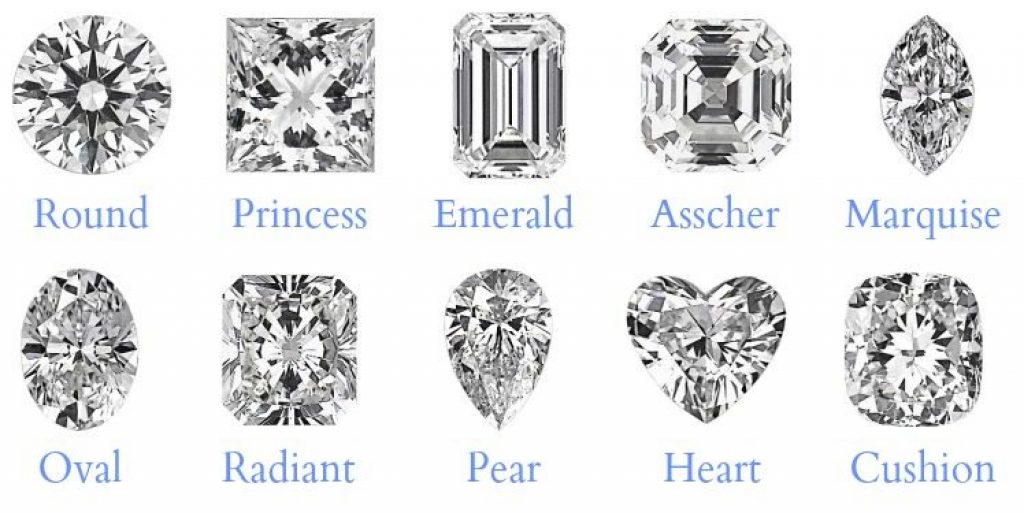
As opposed to a diamond’s cut (how well a diamond has been cut to reflect light):
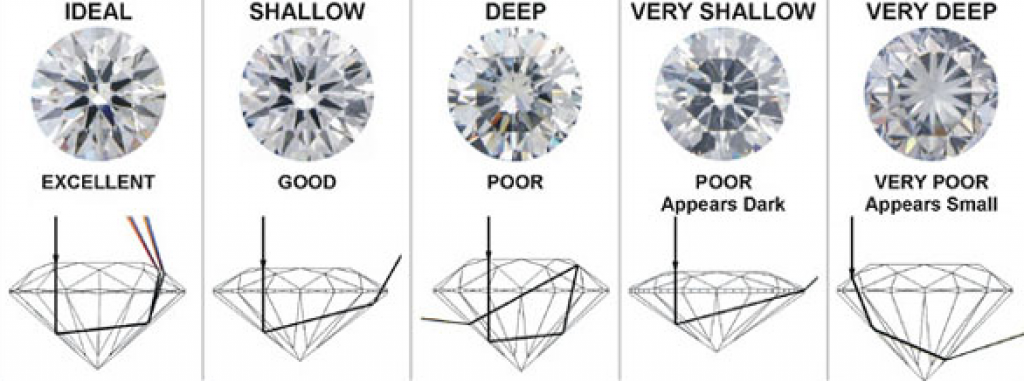
Shape and cut are related, however, since the cut (shape) of these individual shapes is influenced by how well it has been cut (angles set to reflect light) to that particular design.
You’ll find out a lot more about this as you read about each type of diamond shape. But first, here’s two terms you’ll want to be familiar with…
Brilliant Cut vs. Step Cut Diamonds
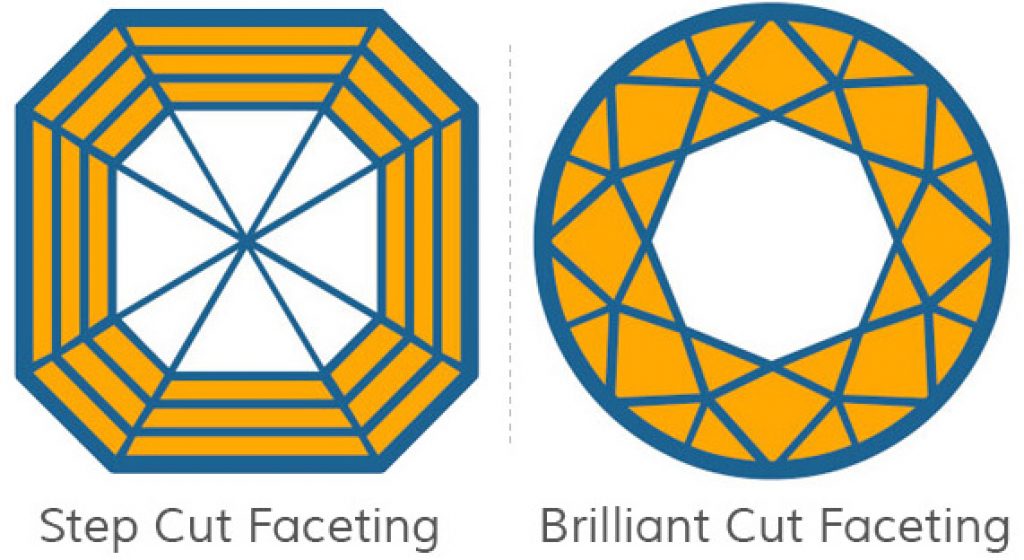
When it comes to diamonds, CUT matters. Of all the 4 C’s of buying diamonds, the CUT of the diamond is the most important factor for determining a diamond’s brilliance – you know, those blindingly intense flashes of light we associate diamonds with.
And all of the diamond shapes below can be classified according to two general types of cuts: Brilliant Cut and Step Cut.
Here’s what you need to know about each type of cut!
Brilliant Cut
Brilliant Cut is a term you’ll hear again and again and this simply refers to diamonds of any shape with facets that are mostly triangular or kite-shaped and that radiate from the center.
Like the name suggests, Brilliant Cut diamonds give off the most brilliance – which is simply the brightness of a diamond that is created by all the white light reflections from both the surface and the insides of a diamond. It’s this reflection of white light that results in that “crushed-ice,” BLING look that diamonds are so well-know for.
The most popular of the brilliant cut diamonds are Round Cuts, Oval Cuts, Marquise Cuts, Cushion Cuts, Pear Cuts, and Heart Cuts.
An alternative to Brilliant Cuts are the…
Step Cut
The Step Cut is another cutting style with long, narrow facets in rows that run parallel to the girdle on both the crown and pavilion.
Step Cut diamonds produce a “hall-of-mirror” effect, rather than the “crushed ice” bling-iness of Brilliant Cut diamonds. As a result, Step Cut diamonds are less fiery than Brilliant Cuts but produce an entrancing optical effect of long lines and contrasting light and dark planes for dramatic flashes of light.
The most popular of the Step Cut diamonds are the Emerald Cut and the Asscher Cut.
So how do they stack up?
Each of these two cuts have their unique advantages and disadvantages. A Brilliant Cut diamond reflects more light and stronger contrast, giving it a brilliance that a Step Cut diamond lacks.
Still, the Step Cut has its own dramatic, elegant charm that’s reminiscent of a sort of old-world glamor. This cut is best-known as the preferred cut by style icons such as Jackie Kennedy and Grace Kelly and may be the perfect choice depending on the style preference of your wife-to-be.
Step Cuts also tend to be far less pricey than Brilliant Cut stones and have been gaining popularity with the 3-stone engagement ring setting.
Ultimately, which one you go with depend on you and your fiance’s style and preferences but it’s good to keep it in mind as you shop for the perfect diamond shape, which brings us to…
Most Popular Diamond Shapes
To get you acquainted with the range of diamond shapes out there – as well as their pros and cons – here’s a simple list of everything you need to know about shapes!
Round Cut Diamonds
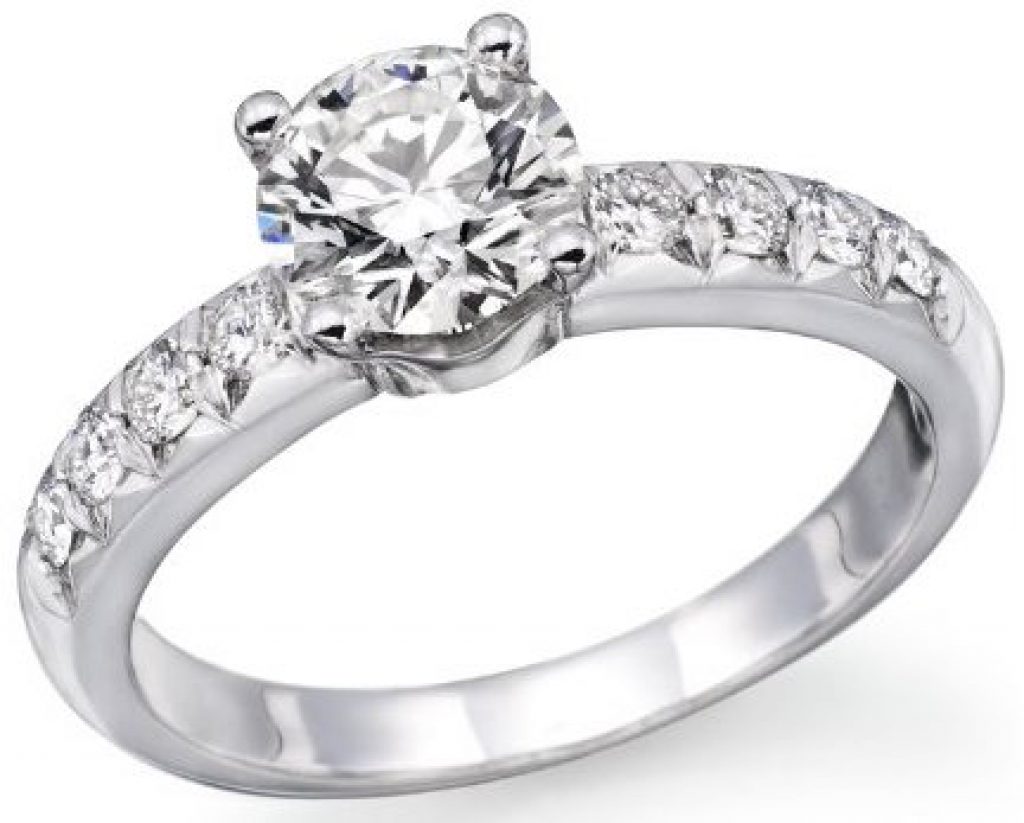
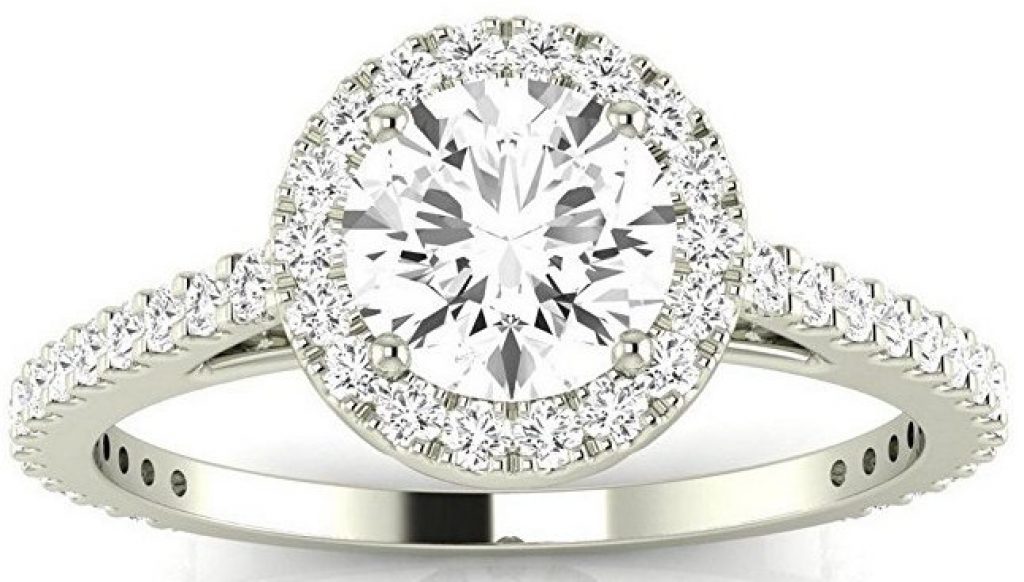
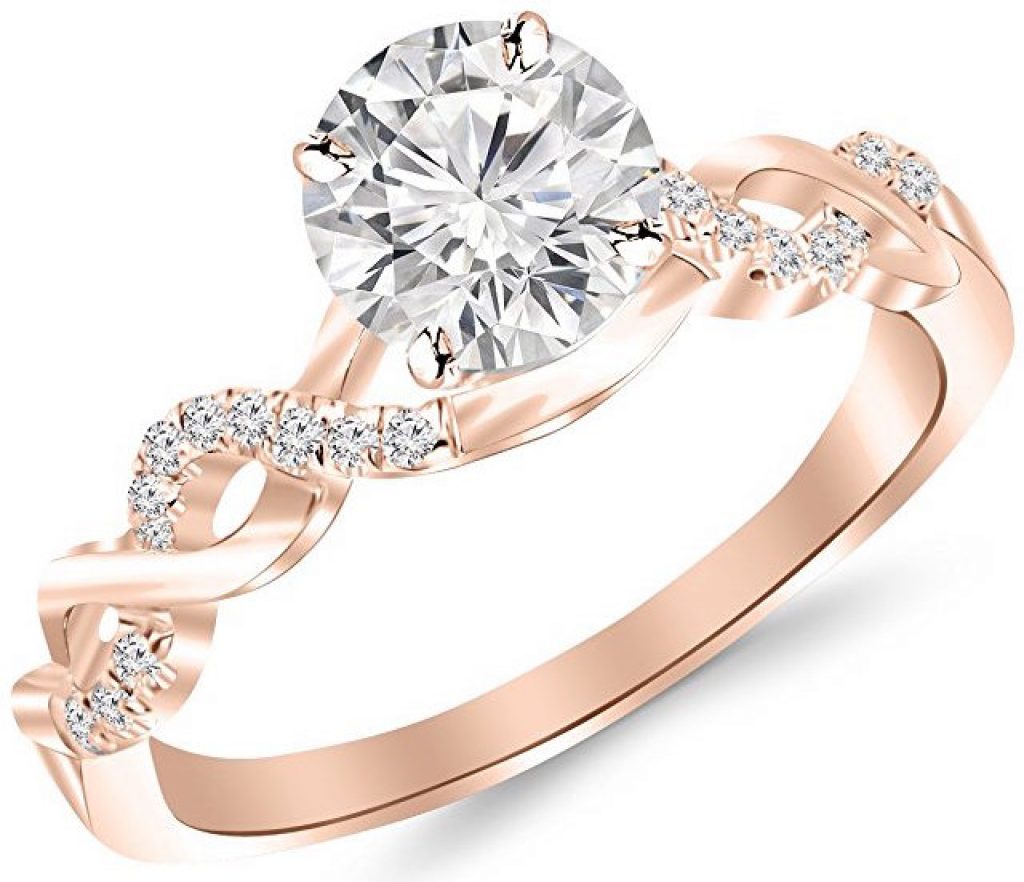
The classic round cut diamond is the most popular diamond shape. In fact, about 75% of all diamonds sold are round cuts!
There is good reason for its popularity, since the round cut is considered to be the most superior shape for bringing out the most brilliance. Brilliance is simply the brightness of a diamond that is created by all the white light reflections from both the surface and the interior angles of a diamond. It is this reflection of white light that results in the “crushed-ice,” sparkly look that diamonds are famous for.
A well-cut round diamond consists of angles that perfectly reflect light back toward the top for maximum brightness, the flashes of light that dazzle when a diamond moves, and the fire of rainbow colors that are reflected off a diamond.
Thanks to their superiority in brilliance, round diamonds tend to cost more on a per carat basis than other shapes because the demand is so high and also because more of a rough diamond stone is lost in the cutting of a round diamond.
Recommended setting styles: Round cut diamonds are very flexible and can fit to pretty much any style of ring.
Princess Cut Diamonds
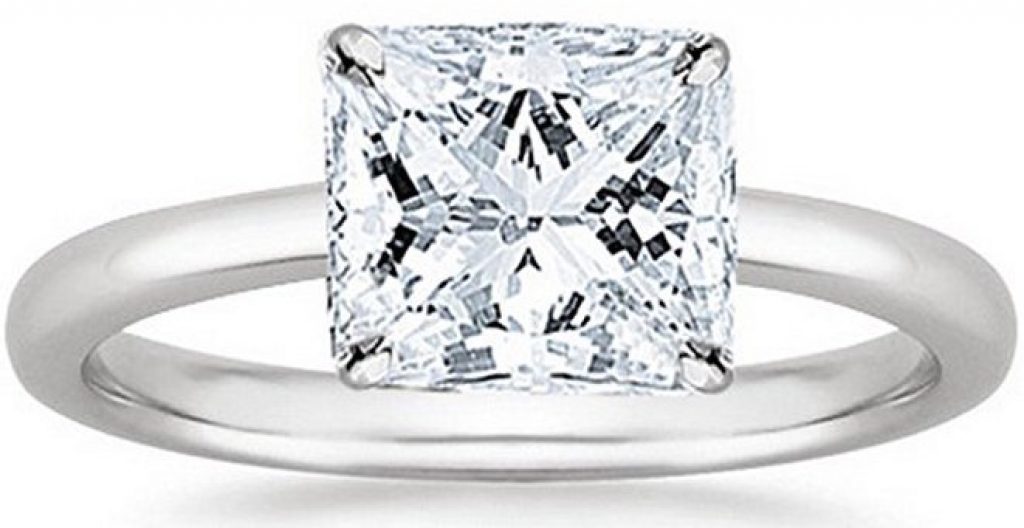
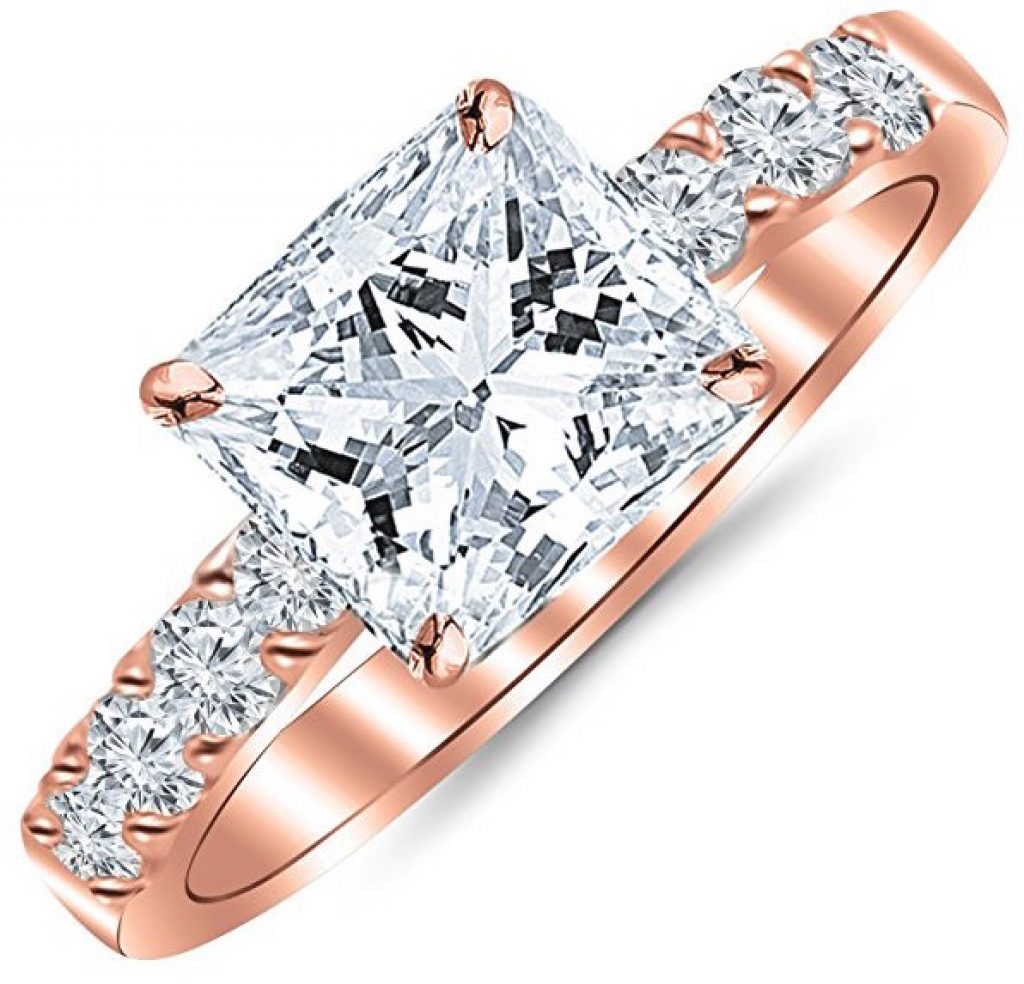
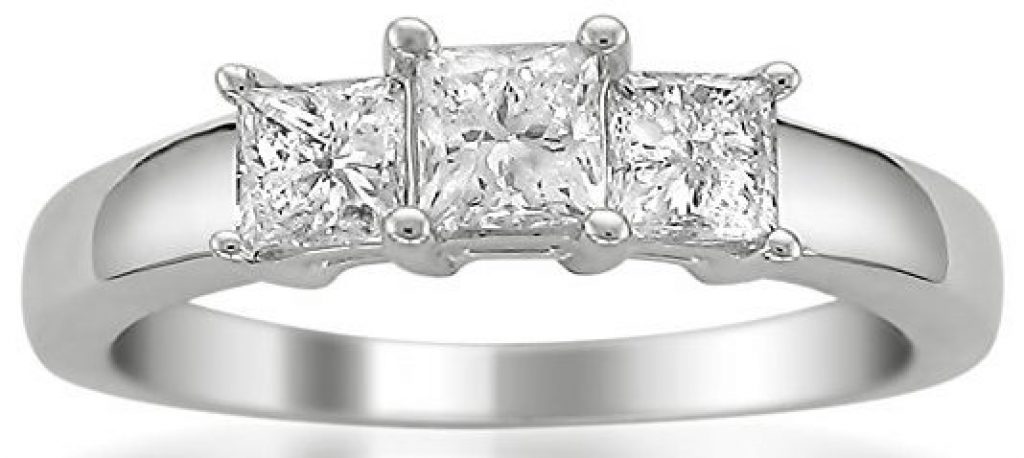
The princess cut is relatively new to the diamond shapes world but is already a very popular diamond cut for engagement rings, possibly since princess cut diamonds have a high sparkle factor that’s comparable to the brilliance of round cut diamonds – but with a lower price tag.
This cut is also popular among diamond cutters since of all the cuts, it wastes the least of the original crystal. Because the 4-sided pyramid shape of a princess cut diamond is similar to a half of a octahedron rough diamond stone , two equally-sized princess cut diamonds can be cut from the same rough diamond stone with relatively little waste.
This is why princess cut diamonds typically cost less per carat than round cut diamonds. Also, the corner-to-corner measure of a princess cut is about 15% greater than the diameter of a same-weight round diamond, so it creates the illusion of greater size.
Tip: Of all the square cut diamonds, the “Brilliant-Cut or Radiant-Cut Princess” are the sparkliest. The amount of sparkle can hide low clarity, to some degree, but it will not hide low color – useful to remember when you’re assessing a Princess Cut diamond’s 4 C’s.
Recommended setting styles: Flexible and can work with most styles, but a Princess Cut diamond should always be set so that its four corners are protected.
Oval Cut Diamonds
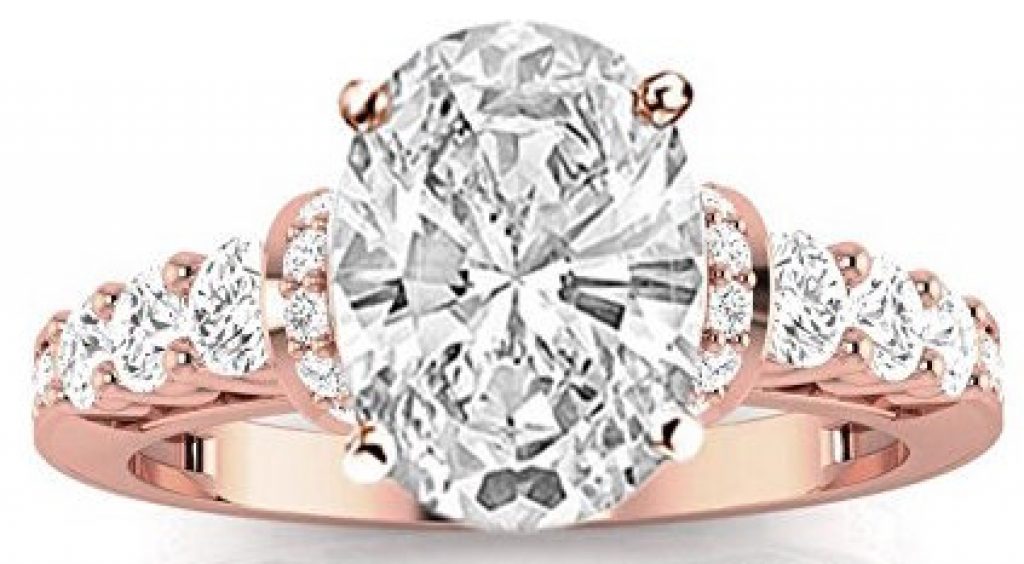
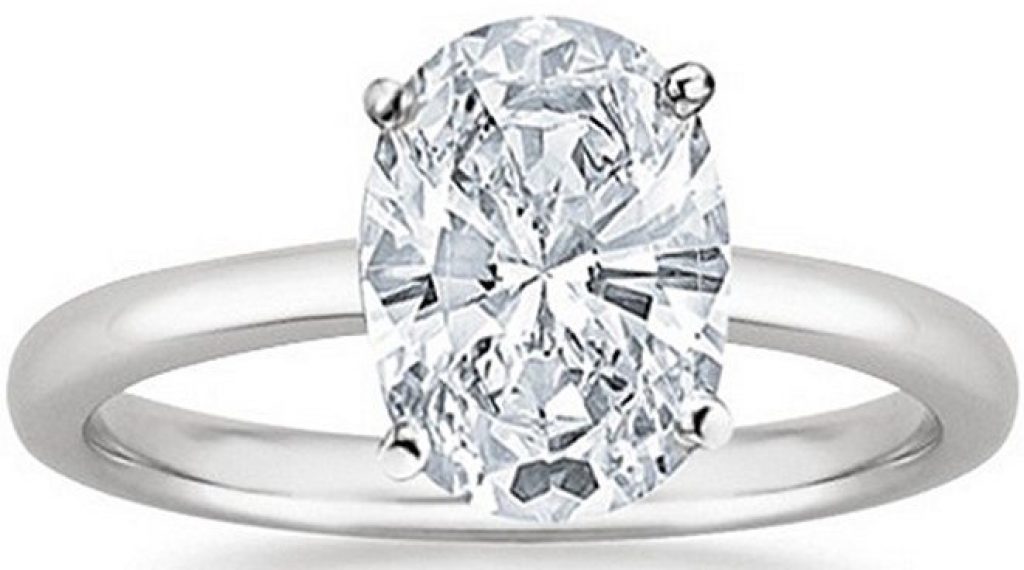
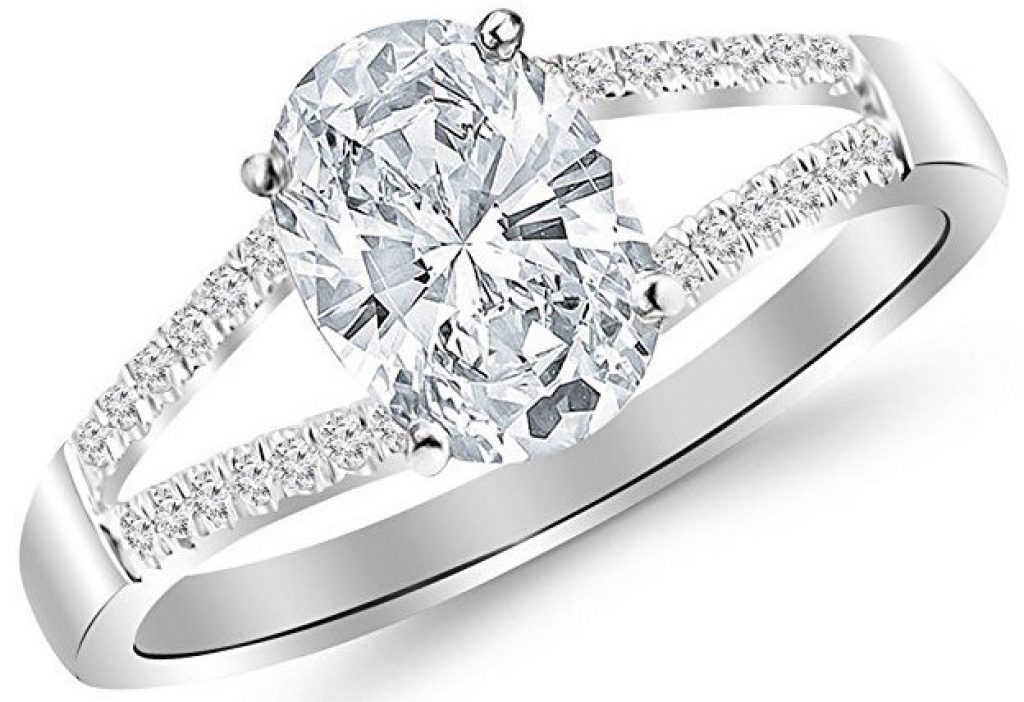
The oval cut is a unique take on the classic round cut and since the two shapes possess similar fire and brilliance, the oval cut is an ideal choice if you like the look of a round diamond but want something a bit more unique.
Oval-shaped diamond rings are a unique take on the classic round cut diamond and a great choice if you like the look of a round diamond but want something a bit more unique.
Oval diamonds are brilliant cuts, which mean they’re shaped to maximize brilliance and fire – the rainbow range of colors that diamonds flash.
Oval cut diamonds also have the benefit of appearing bigger, thanks to the elongated shape.
Tip: Oval Cuts are ideal for women with bigger, thicker fingers since the slender shape helps make the fingers appear longer and slimmer.
Recommended setting styles: Oval Cuts are pretty much as flexible as Round Cuts and can suit a variety of ring setting styles. A slightly thinner Oval Cut may be most flattering in a setting where the diamond is flanked by smaller side stones.
Tips on buying an oval-shaped diamond engagement ring: Oval-shaped diamond engagement rings are not that common and tend to be pricier than many of the other diamond shapes. When shopping for a ring, expect to pay at the very least $2,000 for an oval-shaped diamond ring. Prices only go up from there.
A more affordable option would be to purchase a loose oval-shaped diamond and have it set separately. The best online store for buying loose diamonds is James Allen – they have their entire loose diamond inventory visible online for 360 degree viewing, with drag-and-click options so you can every angle and sparkle in the diamond.
Marquise Cut Diamonds
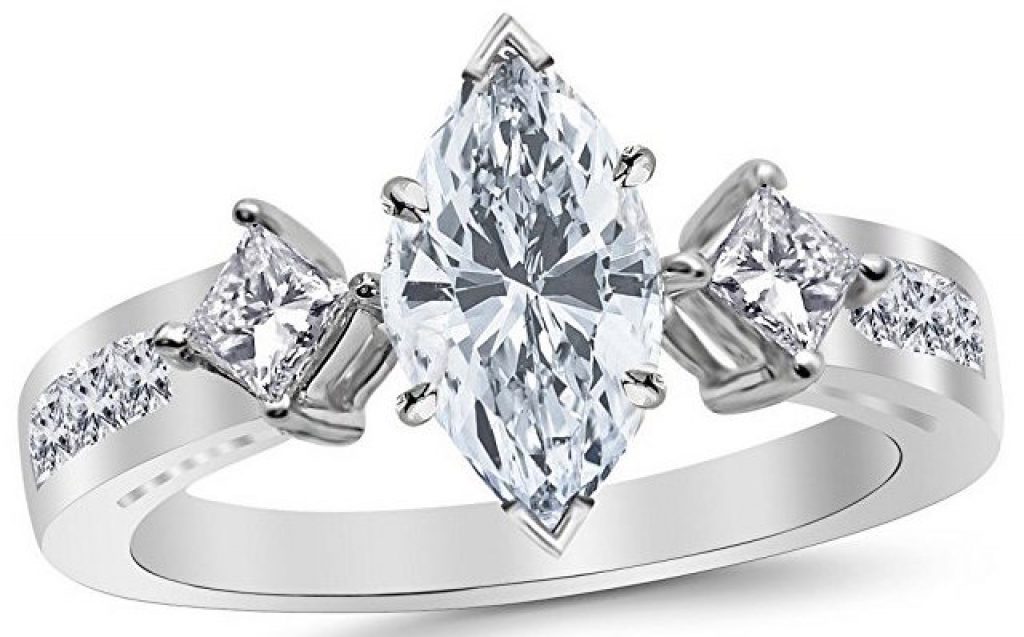
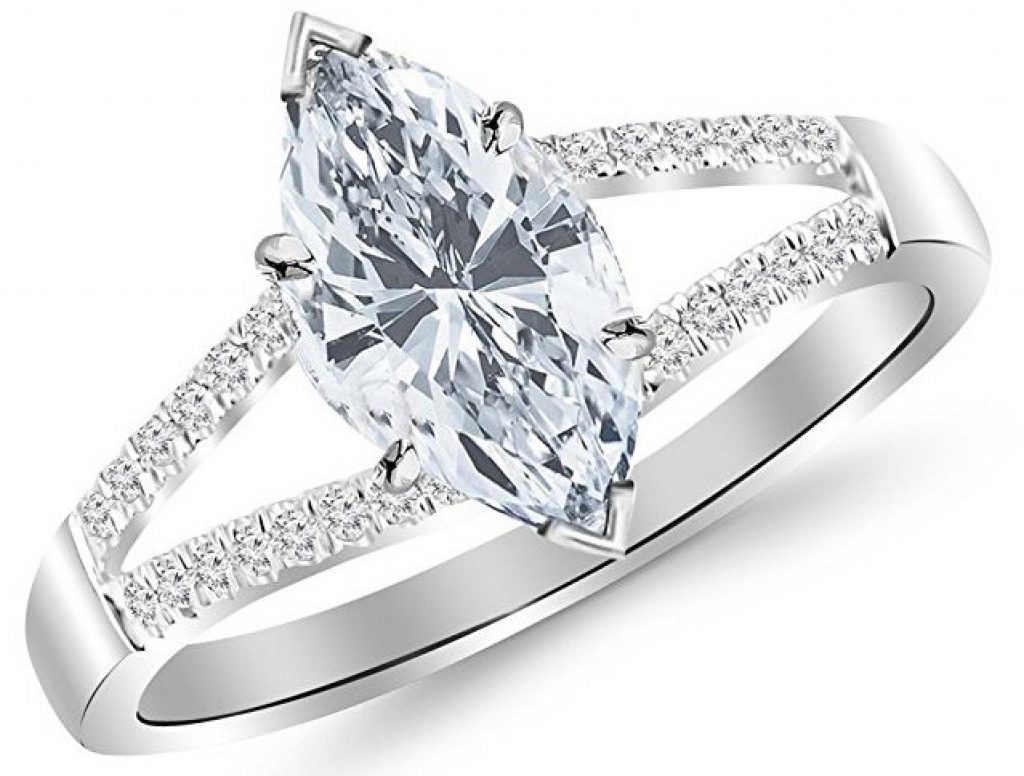
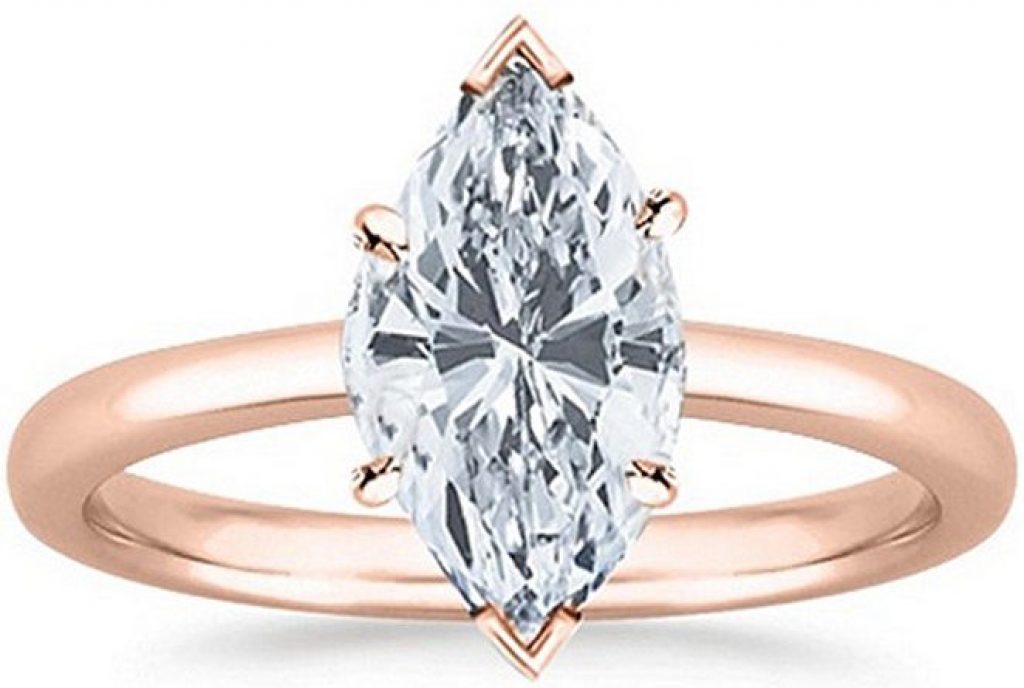
The Marquise cut is simply an oval with pointed ends, shaped slightly like a football.
Marquise diamonds are brilliant cuts, which simply means that they’ve been cut at an angle that reflects white light to maximize the diamond’s brilliance. The result? Awesome sparkle and light reflection.
A particular advantage of the Marquise Cut is that it’s long and narrow, creating the illusion of greater size. Carat for carat, these cuts produce one of the largest crown surface areas of any diamond shape – perfect if you want a large diamond without the big price tag.
Tip: Like the oval diamond, the marquise cut diamond’s elongated shape helps make the finger appear longer and slimmer.
Recommended setting styles: Marquise Cuts are pretty much as flexible as Round Cuts and can suit a variety of ring setting styles, but should always be set so that the two pointed ends are protected.
Pear Shape Diamonds
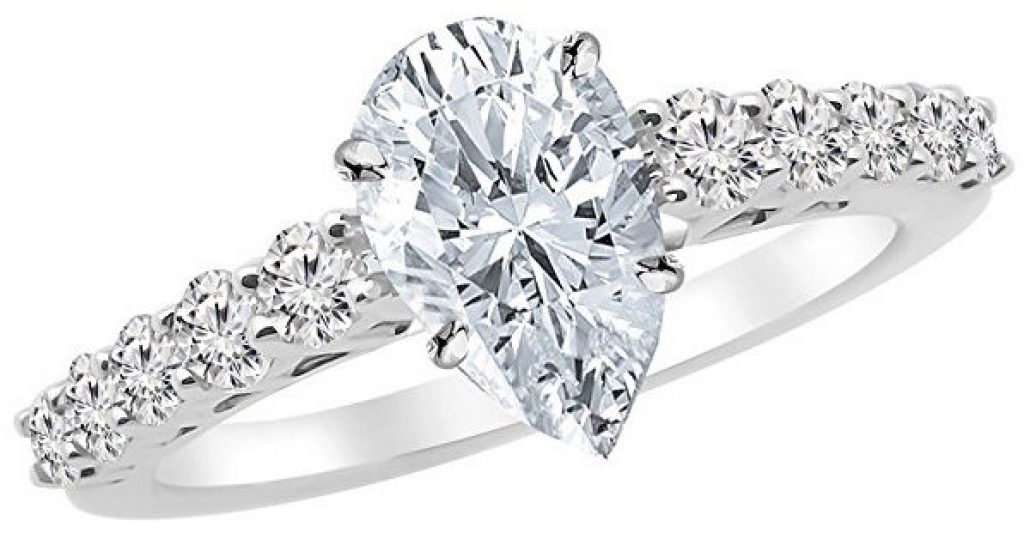
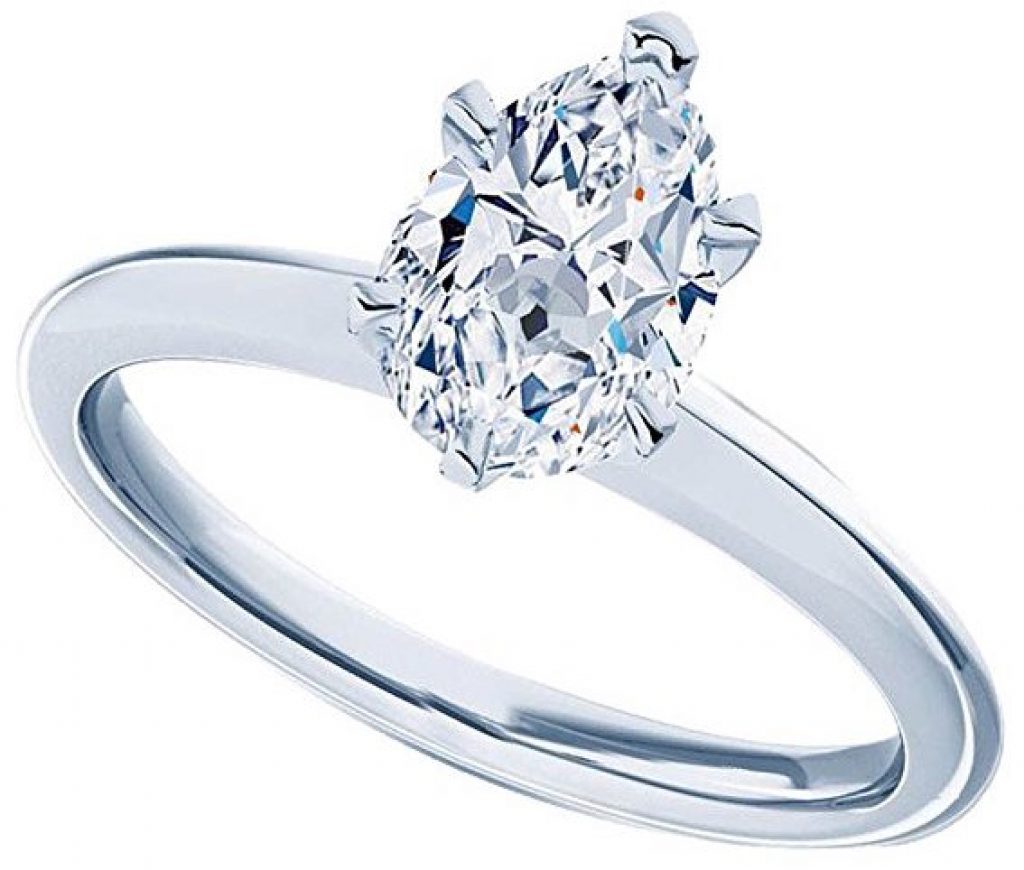
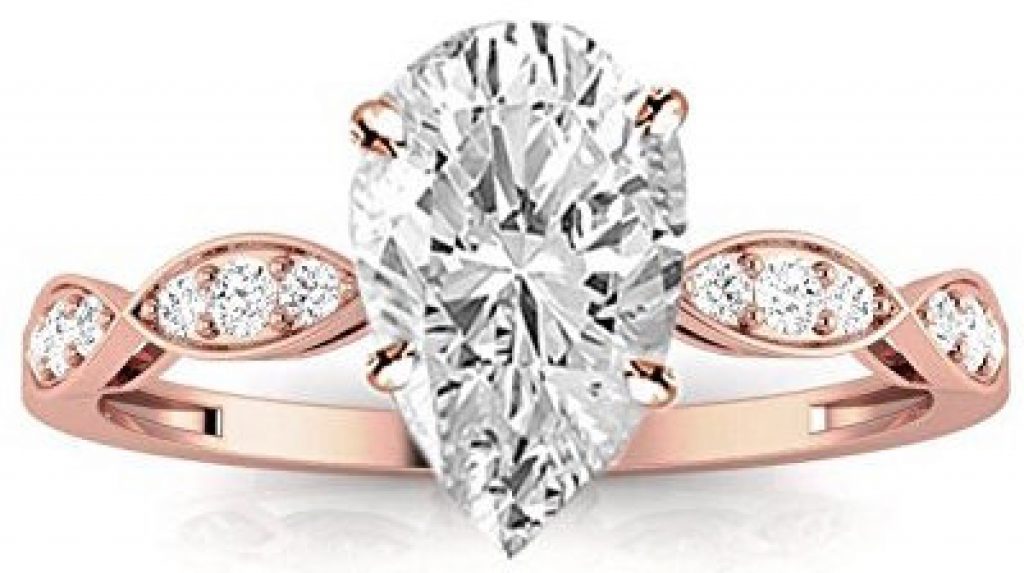
Also known as the “Teardrop,” the Pear Cut is a brilliant-cut diamond that combines the Round and the Marquise Cuts for a unique, highly feminine shape.
The pear shaped diamond’s claim to fame began when a beautiful pear diamond was given to Elizabeth Taylor by her husband Richard Burton.
The length-to-width ratios of pear shaped diamonds range from 1.40 to 1.70.
As you can see, the diamond tends to taper down, becoming narrower as you go up toward 1.70. Whether you get a wide or narrow pear diamond doesn’t affect its quality – it’s more a matter of personal choice – but generally, a wider shape looks nicer in an engagement ring, especially if it’ll be a solitaire ring.
Tip: Like both the marquise and oval cuts, the Pear Cut has the advantage of making fingers look longer and slimmer. Avoid Pear Cut diamonds in which the rounded end is not symmetrical.
Recommended setting styles: The pear cut looks great in a variety of ring settings. Check out the glossary of engagement ring settings for suggestions!
Radiant Cut Diamonds
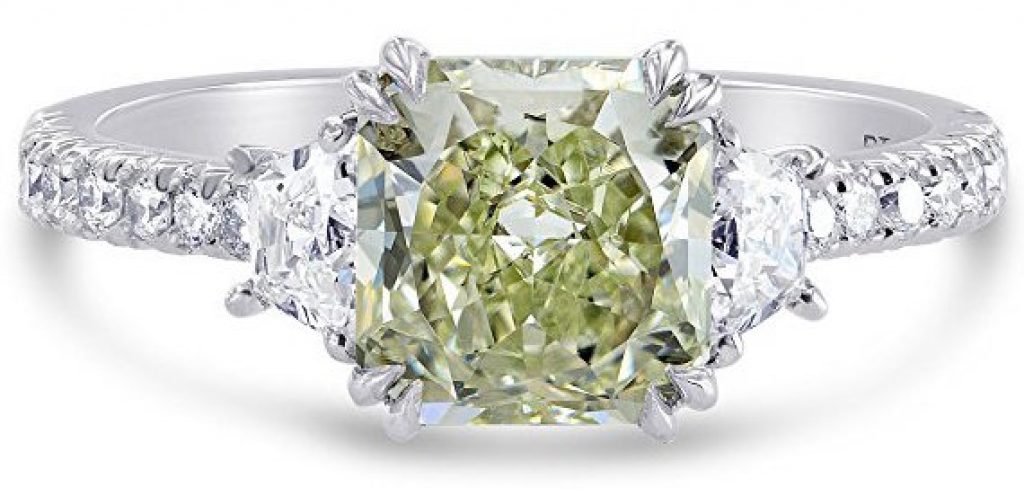
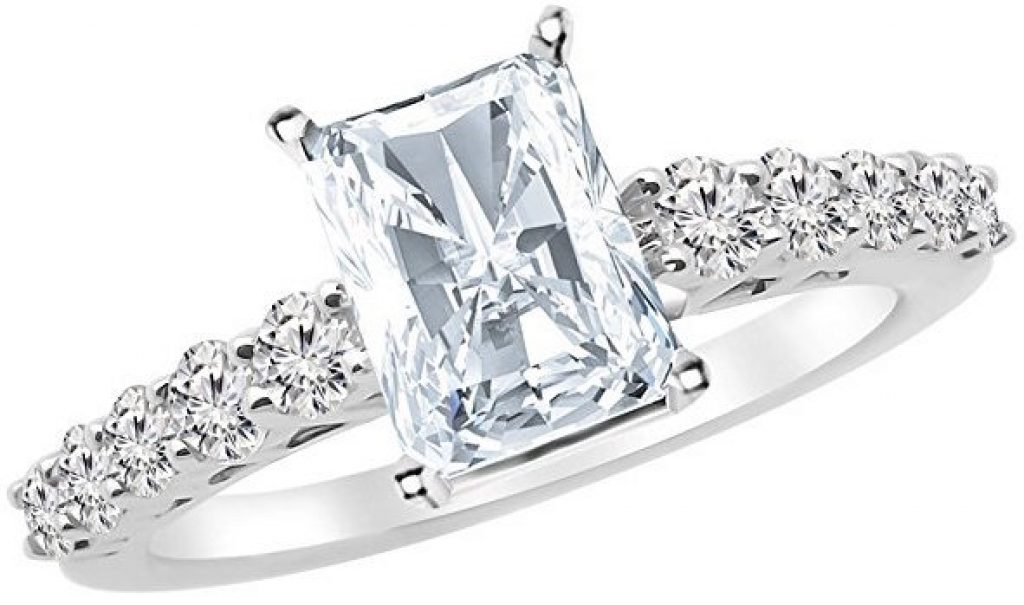
The Radiant Cut is the most brilliant of all the square diamond shapes, perfectly combining an elegant square (or rectangular) shape with the brilliance of the round cut diamond. The corners are slightly trimmed, giving it a tidy elegance.
The Radiant Cut is a square or rectangular shapes stone that combines the brilliance of the round cut diamond with the trendy twist of the princess cut. The corners are slightly trimmed, giving it a tidy elegance.
The radiant cut diamond is the first square cut diamond to use a complete brilliance-cut facet pattern, making this cut the most brilliant of all the square diamond shapes. It’s an ideal choice for someone who wants a trendy, unique square shape without sacrificing brilliance.
Recommended setting styles: The radiant cut’s cropped corners make it a nice in-between of the cushion and princess cuts and because of that, the radiant cut looks great set with both rounded or square diamonds.
Cushion Cut Diamonds
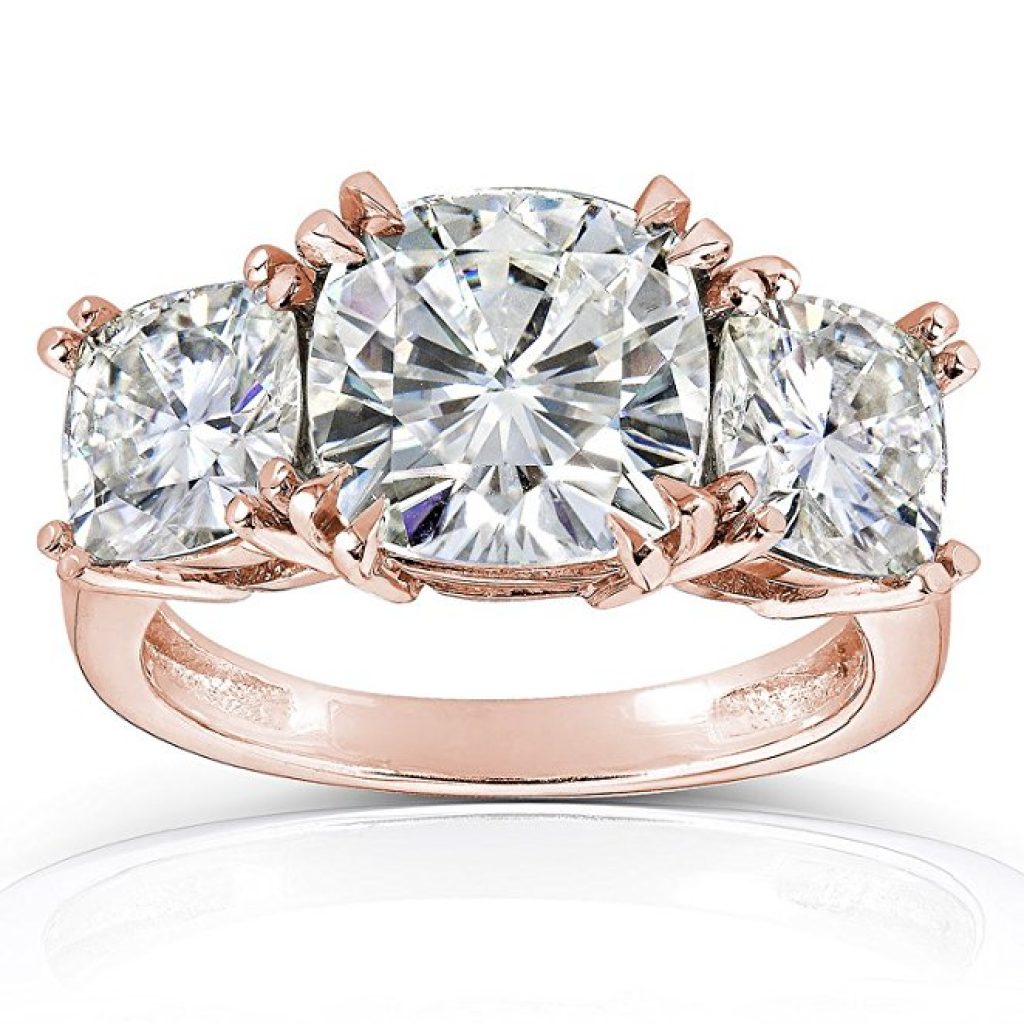
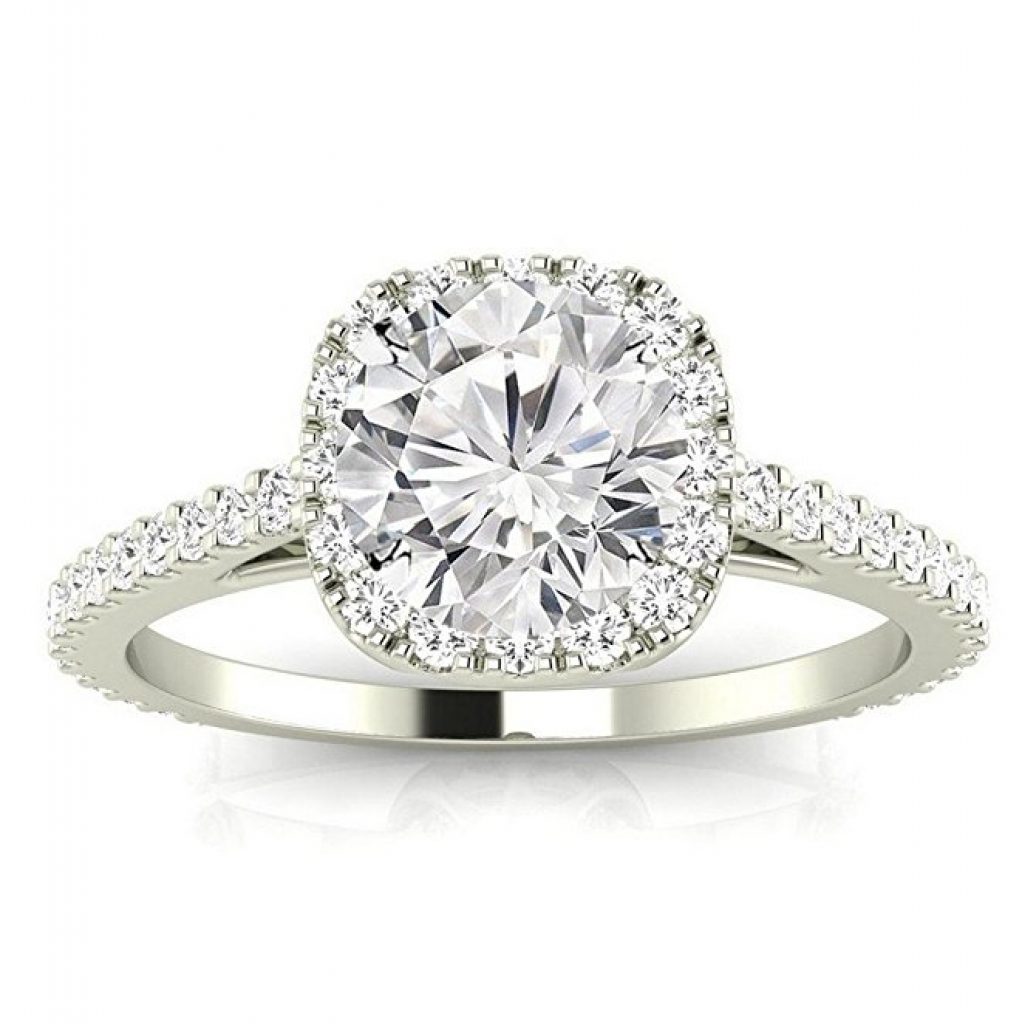
A cushion cut diamond combines a square cut with rounded corners, resulting in a soft, cushion-like shape. This is a classic shape and has been around for nearly 200 years. And not only has it been around, but it was the most popular diamond shape ’til around the early 20th century.
It’s not hard to understand why the cushion cut was so popular – it has the sophistication and elegance that square cuts provide, plus the rounded softness and brilliance of a round cut.
Because cushion cuts were the de facto design up until the 20th century, if you decide to buy an antique diamond engagement ring, you might find quite a few cushion cuts available. However, it’s good to keep in mind that there have been a few modern refinements to cushion cuts, giving the more recently-cut diamonds increased brilliance over traditional ones.
If there’s a drawback to cushion cut diamonds, it’s that they tend to have less brilliance than round cuts. But what they lack in brilliance, they make up with better fire – the light that reflects out of a diamond in a prism of rainbow color.
Tip: The standards for cushion cut diamonds vary more than other shapes, giving rise to a variety of Cushion Cut stones. Still, the modern cushion cuts usually have one of three basic facet patterns:
Of these, the “modified” Cushion Cut (far right) has an extra row of facets on the pavilion, which gives this variety of stones the “crushed ice” brilliance most similar to the Round Cuts – perfect if you like the shape of Cushion Cuts but also want the BLING factor.
Recommended setting styles: The cushion cut looks great in a variety of ring settings. Check out the range of engagement ring settings for suggestions!
Emerald Cut Diamonds
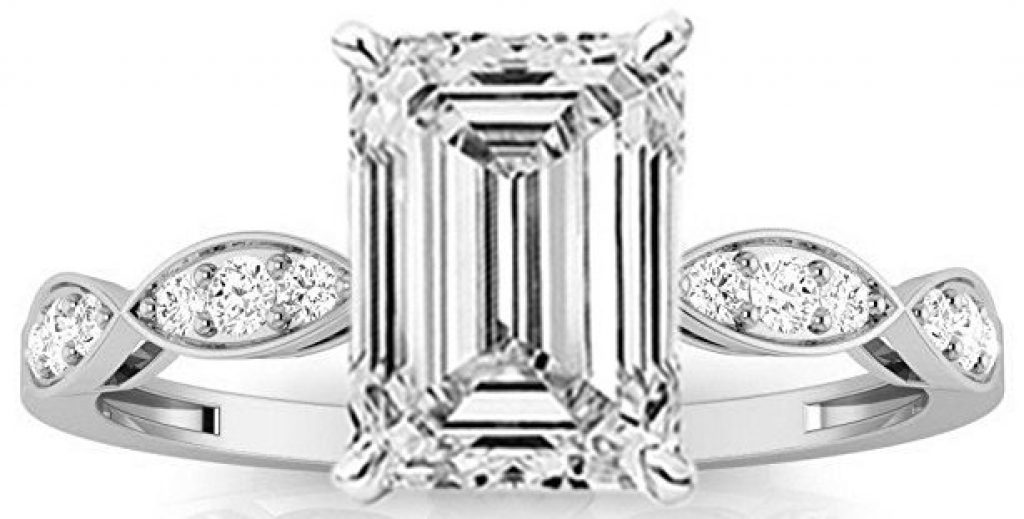
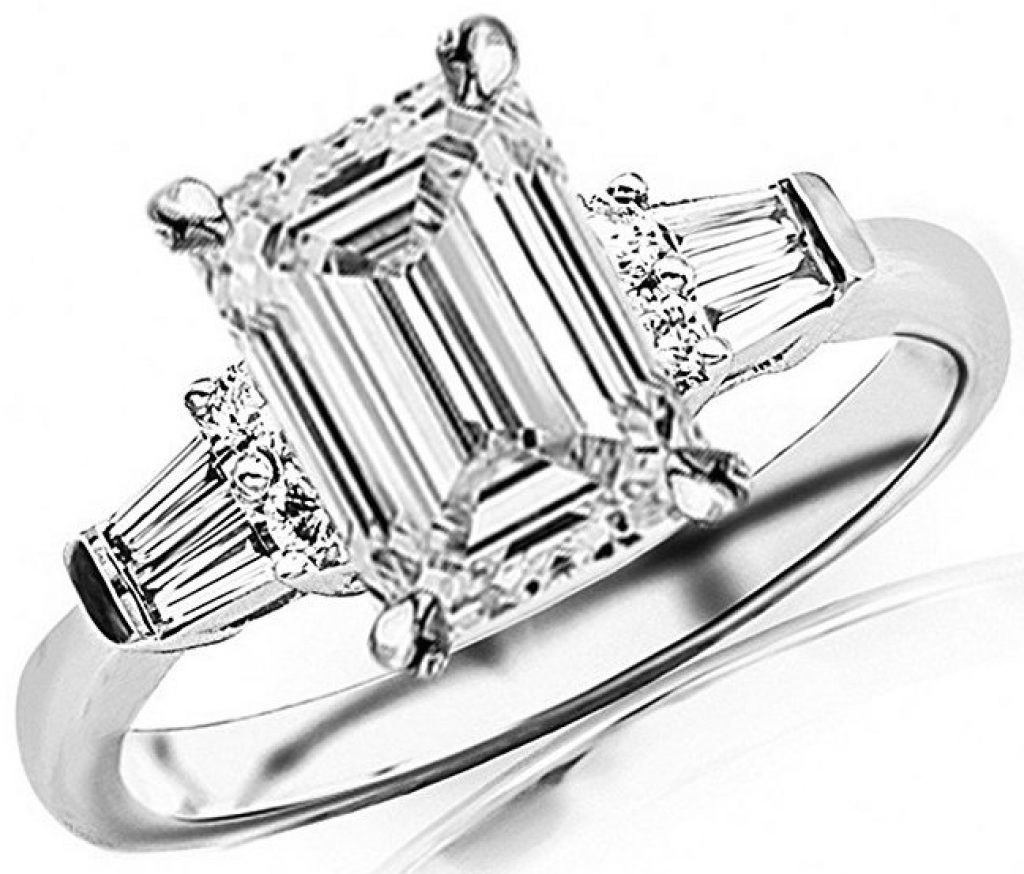
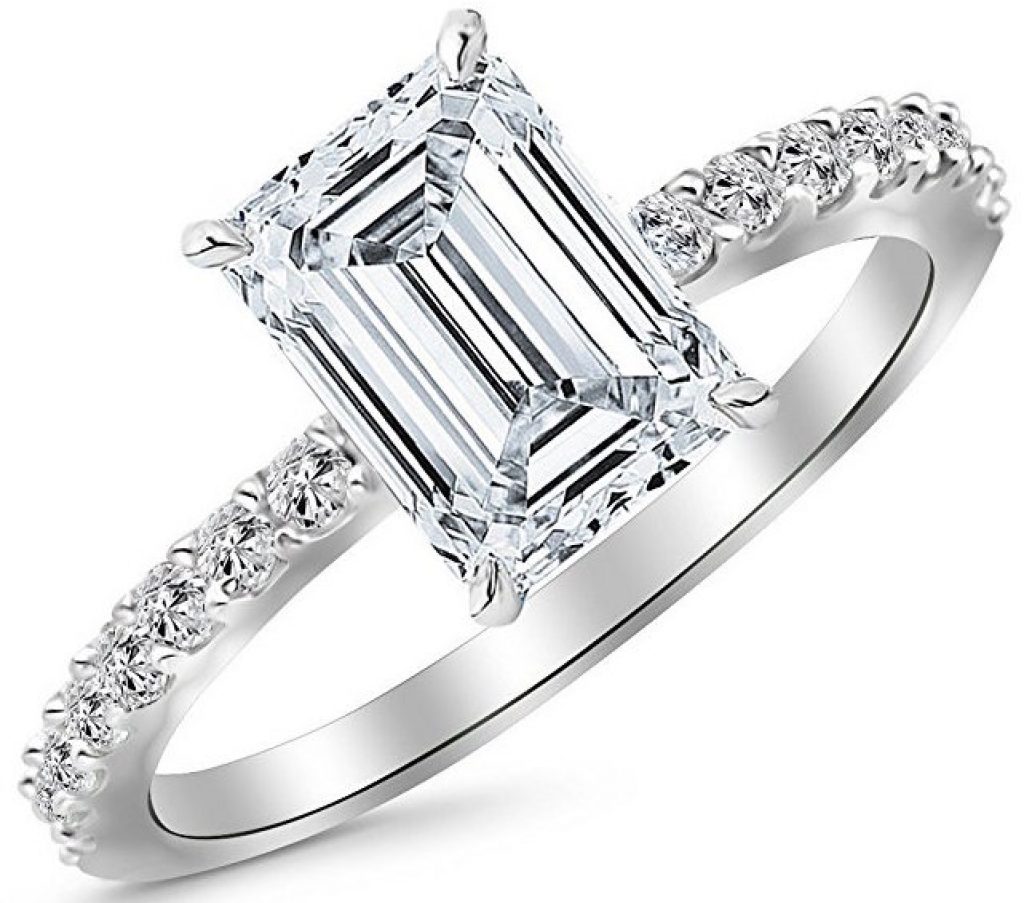
The emerald cut is modeled after the cut of emerald stones and is the most popular of the step cuts. It’s a unique, simple design of a large, open table surrounded by long, stair-step facets.
The elegant emerald cut, with its old world glamor, was the preferred style of legendary fashionistas such as Jackie Kennedy and Grace Kelly. Recently, emerald cuts have been in vogue – being preferred for their uniqueness and beauty. For a woman with a sophisticated, vintage style – this would be the perfect diamond shape.
Like all step cuts, the emerald cut produces a “hall of mirror” effect, rather than the “crushed ice” effect of brilliant buts. These cuts are less fiery, but have the elegant appeal of long lines and dramatic flashes of light.
Tip: The open table of these cuts showcases the diamond’s COLOR and CLARITY – be sure to not skimp on these 2 C’s in mind when you shop for Emerald Cuts!
Recommended setting styles: Emerald cut stones look great in a variety of settings. They can be set with prongs in a solitaire setting or showcased alongside other stones in a three-stone setting.
Tips on buying an emerald cut diamond: Emerald cut diamond engagement rings tend to be pricier than the other cuts (think in the $3,000 and up price range). If you specifically want an emerald cut diamond ring, consider buying the diamonds loose and having the ring set separately. The best online store to shop for loose diamonds is James Allen – they feature 360 degree views of all their loose diamonds and you can click-and-drag to see every aspect of the stone.
Asscher Cut Diamonds
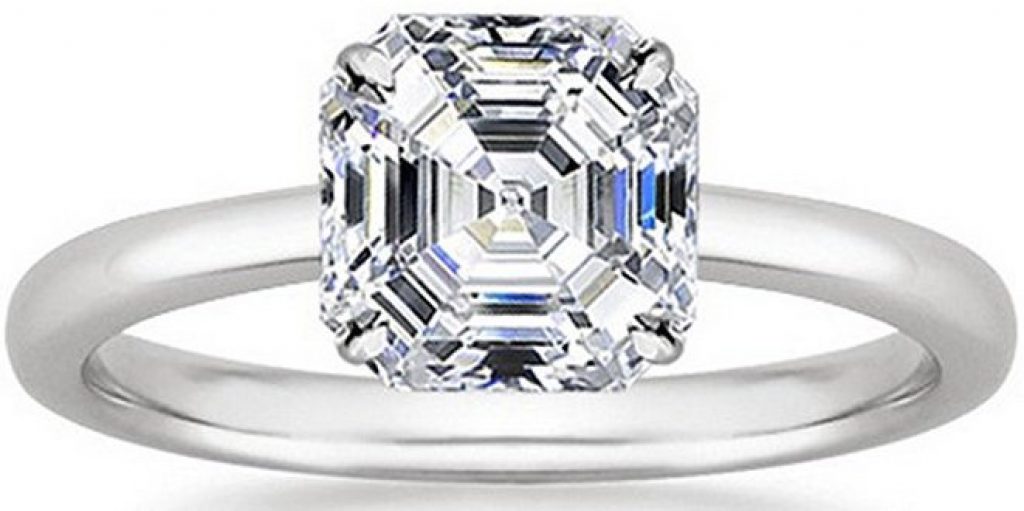
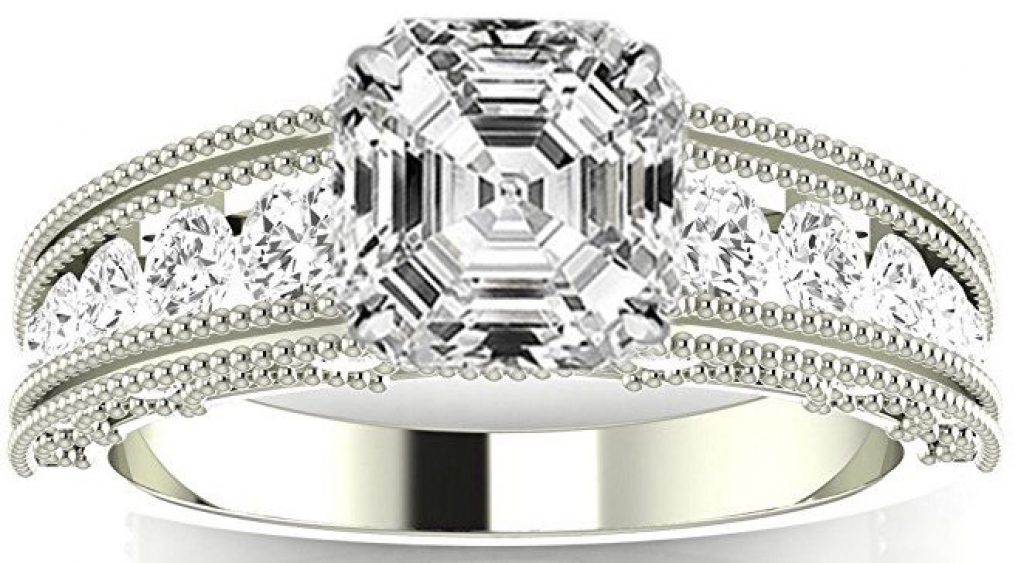
The Asscher Cut is similar to an emerald cut, but square, combining the timeless elegance of the emerald cut with the Art-Deco chic of its octagonal design.
You’ll find a lot of antique asscher cuts diamonds if you decide to go vintage, since these diamonds peaked in popularity in the 1920s before making a comeback again around the early 2000s.
The more modern asscher cuts have been modified to give the shape more brilliance and increase the prismatic “hall-of-mirrors” effect that all step cut diamonds are famous for. The modern asscher cut diamond is still very similar to the emerald cut, but with larger step facets, a higher crown, and a smaller table. This combination gives the asscher cut more brilliance than the emerald cut. Specifically, the more recently-developed Royal Asscher cut has 16 additional facets, increasing brilliance and the making the hall-of-mirrors effect more dramatic.
Tip: You can spot a well-cut asscher diamond by looking down through its table and spotting what looks like concentric squares going down. Also keep in mind that like emerald cuts, the asscher cut also showcases a diamond’s COLOR and CLARITY – these are the 2 most important C’s to consider when shopping for asscher diamonds.
Recommended setting styles: Asscher cuts work well with pretty much every setting style, but if you want to get smaller asscher cut stones set into a multi-stone ring, keep in mind that square cuts tend to be pricier to set than round stones.
Heart Cut Diamonds
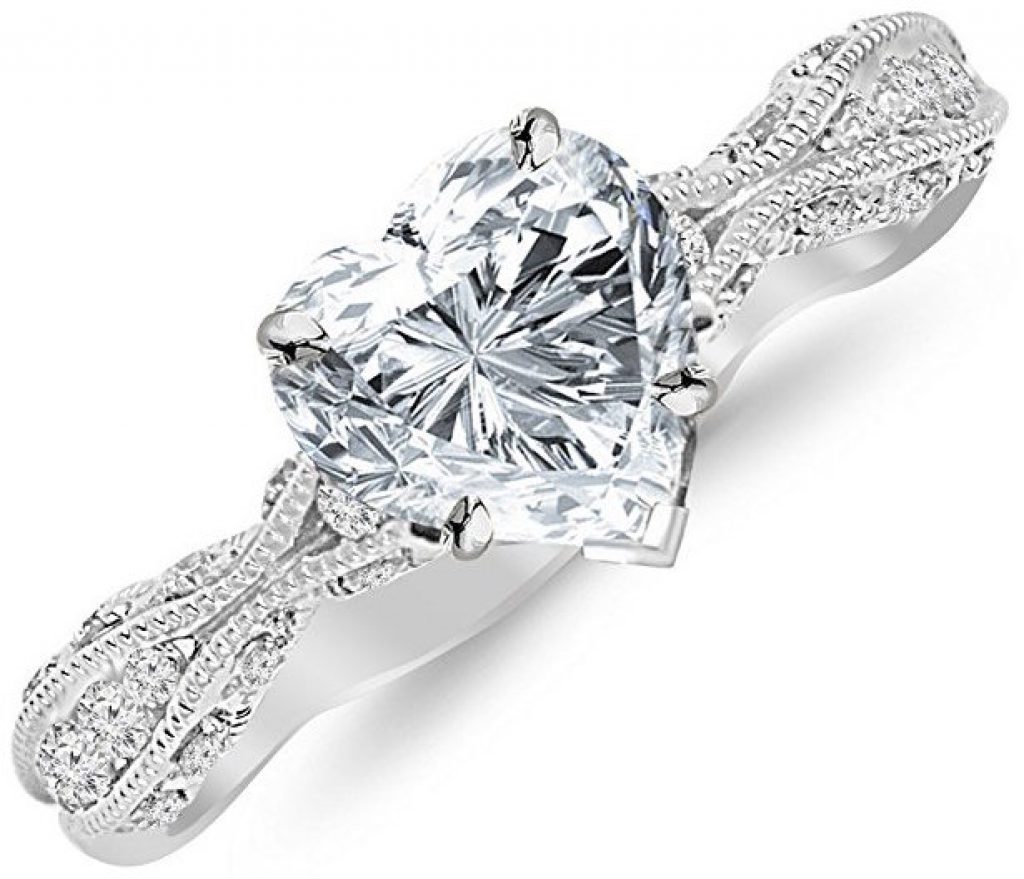
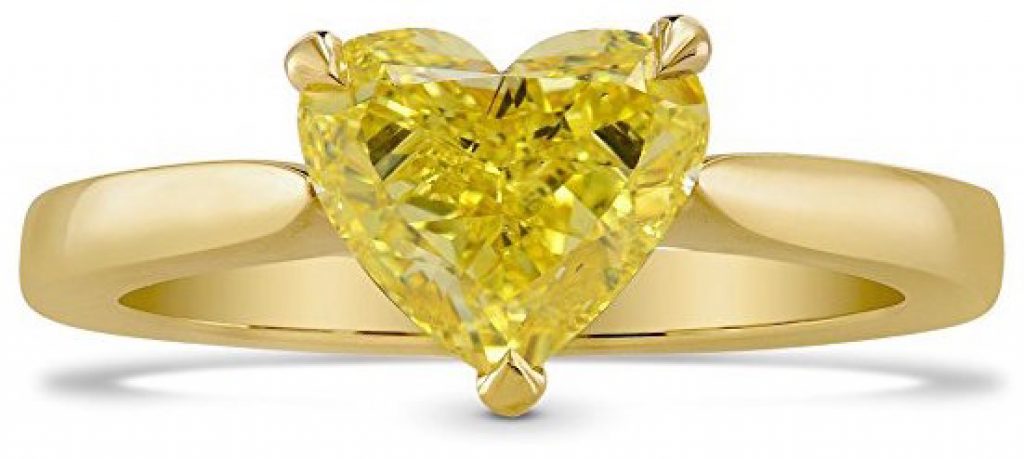
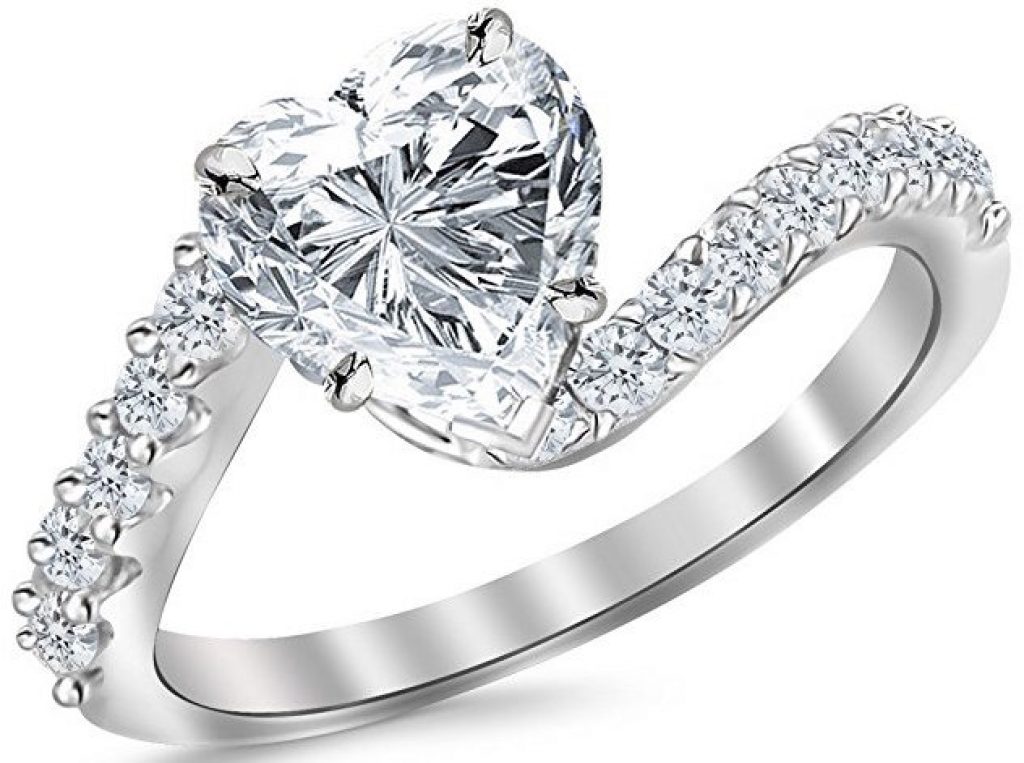
A heart-shaped diamond combines the unmistakable shape of love with the stone that represents forever.
These are Brilliant Cut diamonds, with all the fire and brilliance that these cuts offer.
When choosing a heart, symmetry is super important – make sure that the cleft (cleavage of the heart) is sharp and distinct and that the wings of the heart have a very slightly rounded shape.
Tip: If you opt for a Heart cut diamond, keep in mind that it’ll have to be bigger than .50 carats in order to have a clearly visible shape.
Recommended setting styles:
Heart Cut diamonds are beautiful in a simple solitaire setting (one single diamond). For those settings, a slightly wide cut diamond is the most appealing. A bezel of three-prong setting is also beautiful for smaller hearts.
Once you know the diamond shape you want, you can move on to the fun part – choosing the perfect setting to showcase that stone!